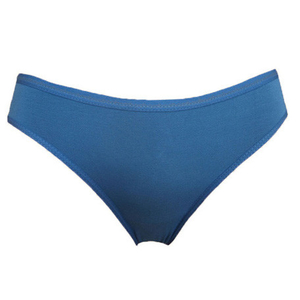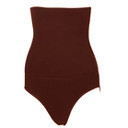Equip your wardrobe with new pieces from our warehouse sale. Single and multi-coloured options, comfortable materials and interesting decorative lace - all at great prices. Take inspiration from the top 20 best-selling women's briefs in our range. High-waisted cotton briefs and beautiful panties for full-figured women. The cut of the classic briefs subtly covers the entire buttocks and the sides are wide enough not to cut into the hips even when worn all day. Classic panties are still the best-selling and most popular cut of women's underwear. For discerning customers, we have collections of panties from European manufacturers.
Oeko-Tex® Standard 100
Öko-Tex Standard 100 is an international testing and certification system for textiles made only from non-hazardous materials. This designation is registered by the OEKO-TEX association with branches in many countries. Its scope of work is to check the health safety of textiles. Clothing marked with the Öko-Tex Standard 100 logo must meet demanding quality criteria. These are based on the latest scientific knowledge and are constantly updated. The samples are tested for harmful substances such as formaldehyde, pesticides, heavy metals, chlorinated hydrocarbons and others. The Oeko-Tex Standard 100 was created in 1992 as a response to consumer concern about the use of harmful chemicals in textile production. The Standard defines what substances are acceptable for use in products that come into contact with human skin and establishes limits for their concentration. To date, over 16,000 companies in 89 countries have been certified to the Oeko-Tex Standard 100. The concept behind the Standard is that it should be possible to produce textiles in an environmentally friendly and socially responsible manner while ensuring product safety for consumers. The choice of raw materials, manufacturing processes and quality control systems used by a company all play a role in determining whether or not a product meets the criteria set out by the Oeko-Tex Standard 100. There are three levels of certification under the Oeko-Tex Standard 100: Product Class I (suitable for direct contact with baby skin), Product Class II (suitable for general consumer products) and Product Class III (suitable for industrial applications). In order to achieve certification at one of these levels, companies must provide evidence that their products meet strict requirements regarding the content of certain regulated substances. They must also put systems in place to ensure ongoing compliance with these requirements. Products that carry the Oeko-Tex label have undergone testing at every stage of production – from raw materials through to final finished goods – by independent laboratories accredited by IAQA (the International Association for Research and Testing in the Field of Textile Ecology). These tests screen for more than 350 regulated substances known or suspected to be harmful to human health. If any of these substances are found present above specified concentrations, the product will not be certified under theStandard.
Organic cotton
Organic cotton is generally defined as cotton that is grown organically in subtropical countries such as India, Turkey, China and parts of the USA, from non-genetically modified plants and without the use of any synthetic agricultural chemicals such as fertilizers or pesticides other than those that allow certified eco-labeling. Its production supports the increase of biodiversity and reduces the negative impacts that arise during the cultivation of conventional cotton. Cotton covers 2.5% of the world's arable land, but uses 10-16% of the world's consumption of pesticides (including herbicides, insecticides and defoliants), which is more than any other crop. The significantly lower price of classic cotton is thus bought out by the destroyed soil and polluted surface waters. We support the sale of organic cotton products. The word “organic” conjures up images of farmers toiling in fields under a hot sun, growing fruits and vegetables without the use of synthetic pesticides or fertilizers. But what about organic cotton? Just as there are organic foods, there is also organic cotton clothing. Organic cotton is grown using methods that are gentle on the environment. Farmers who grow organic cotton do not use harmful chemicals on their crops. Organic cotton is better for the environment because it reduces pollution and conserves water. According to the National Cotton Council of America, it takes approximately one-third of a pound (0.15 kilograms) of chemical fertilizers and pesticides to produce one conventional cotton t-shirt [source: National Cotton Council]. With organic farming practices, that number drops dramatically since no synthetic chemicals are used in production. In addition, producing one pound (0.45 kilograms) of conventional cotton requires more than 2,700 gallons (10,000 liters) of water; only 302 gallons (1,140 liters) are needed to produce an equivalent amount of certified organic cotton [source: Green Peace]. As you can see, choosing certified organic clothing helps reduce your impact on the planet. When you buy certified organic clothes, you can be sure that they were made without child labor or forced labor practices commonly found in countries where conventional cotton is produced [source: Wear Your Voice Mag]. You might pay a little more for these items initially but know that your purchase supports sustainable farming practices and fair treatment of workers around the globe.
 Organic cotton briefs
Organic cotton briefs
 Bamboo briefs
Bamboo briefs
 Seamless briefs
Seamless briefs
 Lace briefs
Lace briefs
 High waisted briefs
High waisted briefs
 Shapewear briefs
Shapewear briefs
 Cheap cotton briefs
Cheap cotton briefs
 S A L E
S A L E